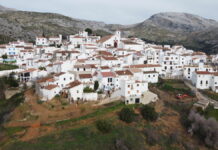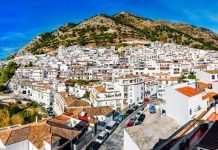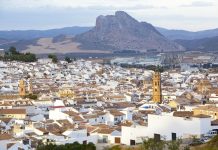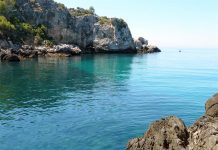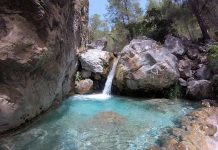RONDA, CRADLE OF BULLFIGHTERS, GOYESCAS AND BANDITS, OF MONUMENTS AND HISTORY
Ronda is one of the most beautiful towns in Malaga, and one of the most interesting in Andalusia. It is located about 100 km from the Malaga capital, and after Antequera, it is the second most populated municipality in the province of Malaga. Find out in this post what to see and do in Ronda.
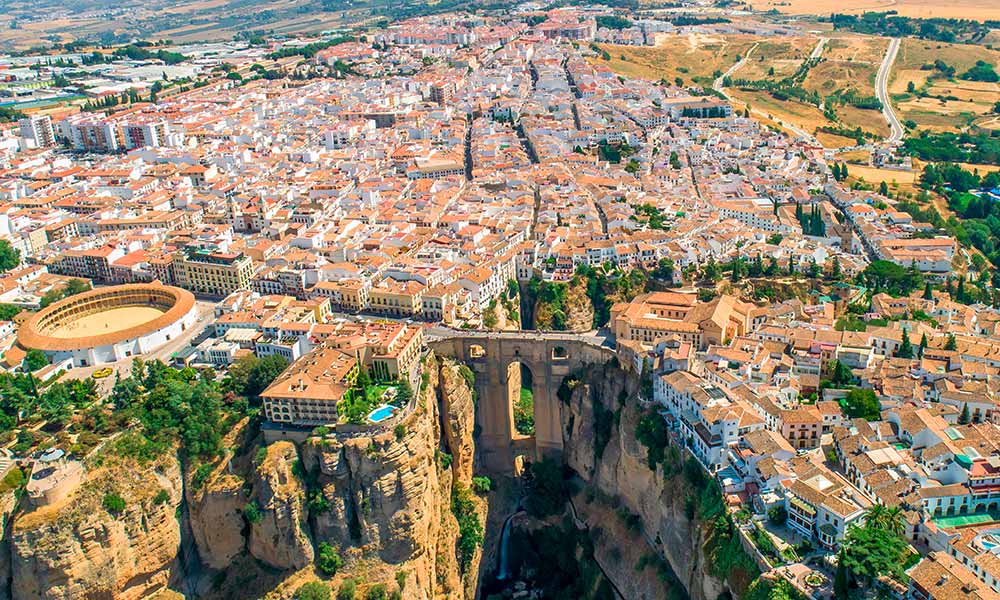
Ronda: A CITY WITH RICHES IN SONG, FLAMENCO AND FOLKLORE, IN CRAFTS, WINES AND GASTRONOMY.
A city of Roman origin, established from Iberian settlements, one of the oldest in Spain surrounded by mountains. To the south by the Sierra de las Nieves and embedded in the well-known Serranía de Ronda. Later modified by Muslim settlements, many of which remain.
The town of Ronda is located on top of a plateau, which is cut by a deep excavated gorge, the famous Tajo de Ronda, which gives the city a picturesque panorama, through which the Guadalevín River travels. Overlooking the river, on both sides of this gorge, we find buildings from the historic center.
A UNIQUE CITY, CRADLE OF BULLFIGHTERS, INSPIRATION OF ARTISTS AND LEGEND OF BANDITS. A CITY OF LIVING HISTORY, TRADITIONS AND CULTURE. CITY OF CASTLES AND COBBLED STREETS, OF GREAT GASTRONOMY AND OF THE MOUNTAINS.
It was in Ronda, at an assembly held in 1918, where the flag and the anthem of Andalusia were chosen.
Ronda
The town can be visited on foot and we will need one or two days to be able to enjoy all the essential places of interest to see in our visit to Ronda.
Below we show you everything to see and do in Ronda:
THE MOST EMBLEMATIC OF THE CITY OF RONDA:
TAJO DE RONDA, the most impressive thing in the city
The TAJO DE RONDA is a wonder of nature, a completely vertical ravine over 100 meters high, which even seems to defy gravity.
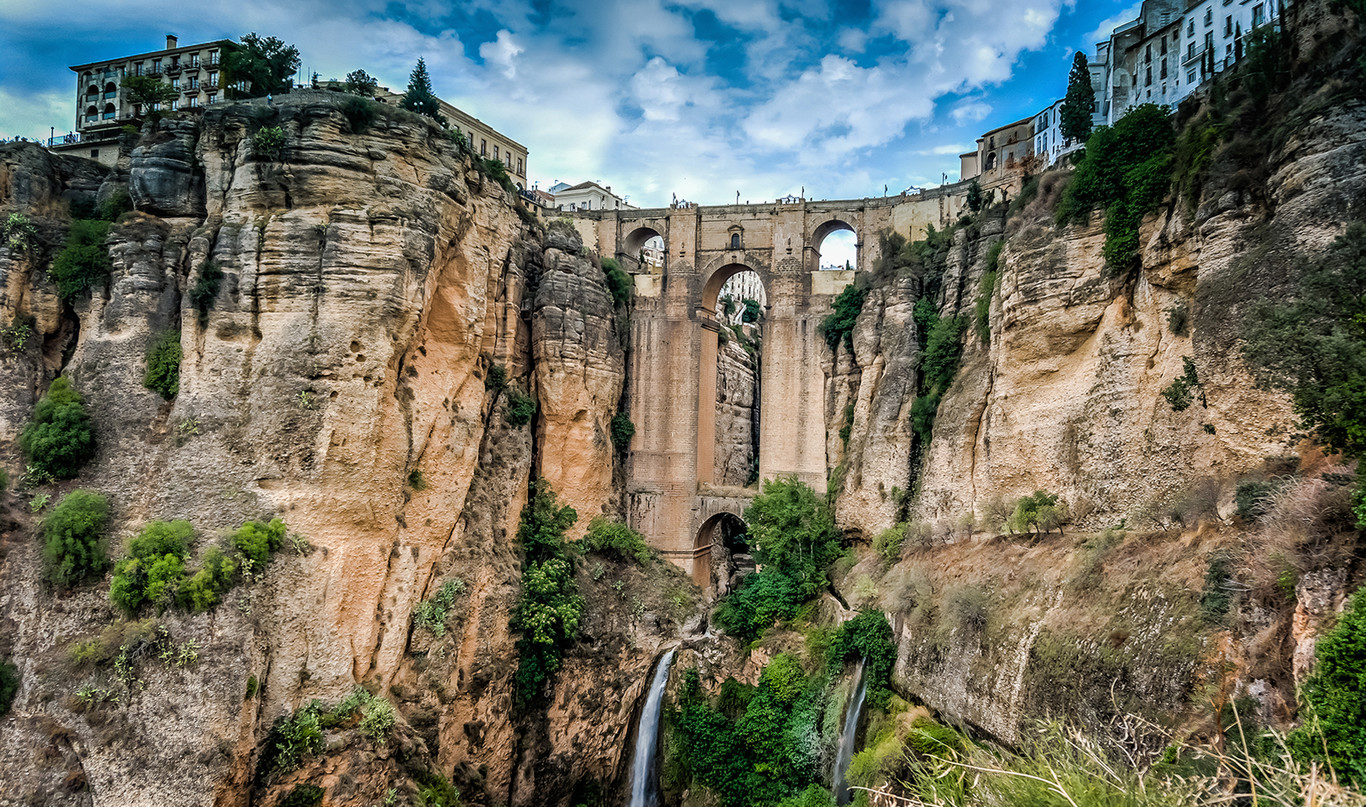
The gorge also divides the city into two well-differentiated areas, on the south side the old Arab medina “La Ciudad”, where we can still see its walls, and on the other side, the more monumental Ronda, with charming corners and restaurants where you can taste the best dishes of the cuisine of the Serranía. Both areas are connected by the wonderful Puente Nuevo over the Tajo de Ronda.
PUENTE NUEVO AND ITS VIEWPOINTS
The PUENTE NUEVO is located on top of the Tajo de Ronda, and thanks to it, the two parts of the city that are divided by the ravine are joined.
It is the most touristy area due to its location and the emblem of the city since its construction in 1793. Who hasn’t seen a photo of this area and known it was Ronda? From it, you can see the depths of the Tajo de Ronda.

DON’T FORGET TO TAKE A FEW PHOTOS IN THIS MARVEL OF ARCHITECTURE WITH IMPRESSIVE VIEWS OF THE TAJO DE RONDA.
To truly appreciate the impressive nature of this place, there are several viewpoints:
– Viewpoint in front of the Puente Nuevo: we can reach it from the Plaza de María Auxiliadora by stairs and crossing a path on the slope of the ravine itself. NOTE! If you have vertigo, we do not recommend visiting it.
– Viewpoint of the Carretera de los Molinos: to access it, you have to go down a paved slope outside the town, from where we will walk up through the Arco del Cristo, one of the ancient entrances to the Arab wall. It is recommended to go by car.
– Aldehuela Viewpoint: located next to the Congress Palace of Ronda.
PLAZA DE TOROS AND BULLFIGHTING MUSEUM OF RONDA
The Plaza de toros de Ronda; Plaza de Toros de la Real Maestranza de Caballería, is one of the oldest in Spain. It was built in 1785 and has a capacity for 5000 spectators. One of the most visited and representative monuments for bullfighting lovers. Declared a Cultural Asset of Interest (BIC) in 1993.
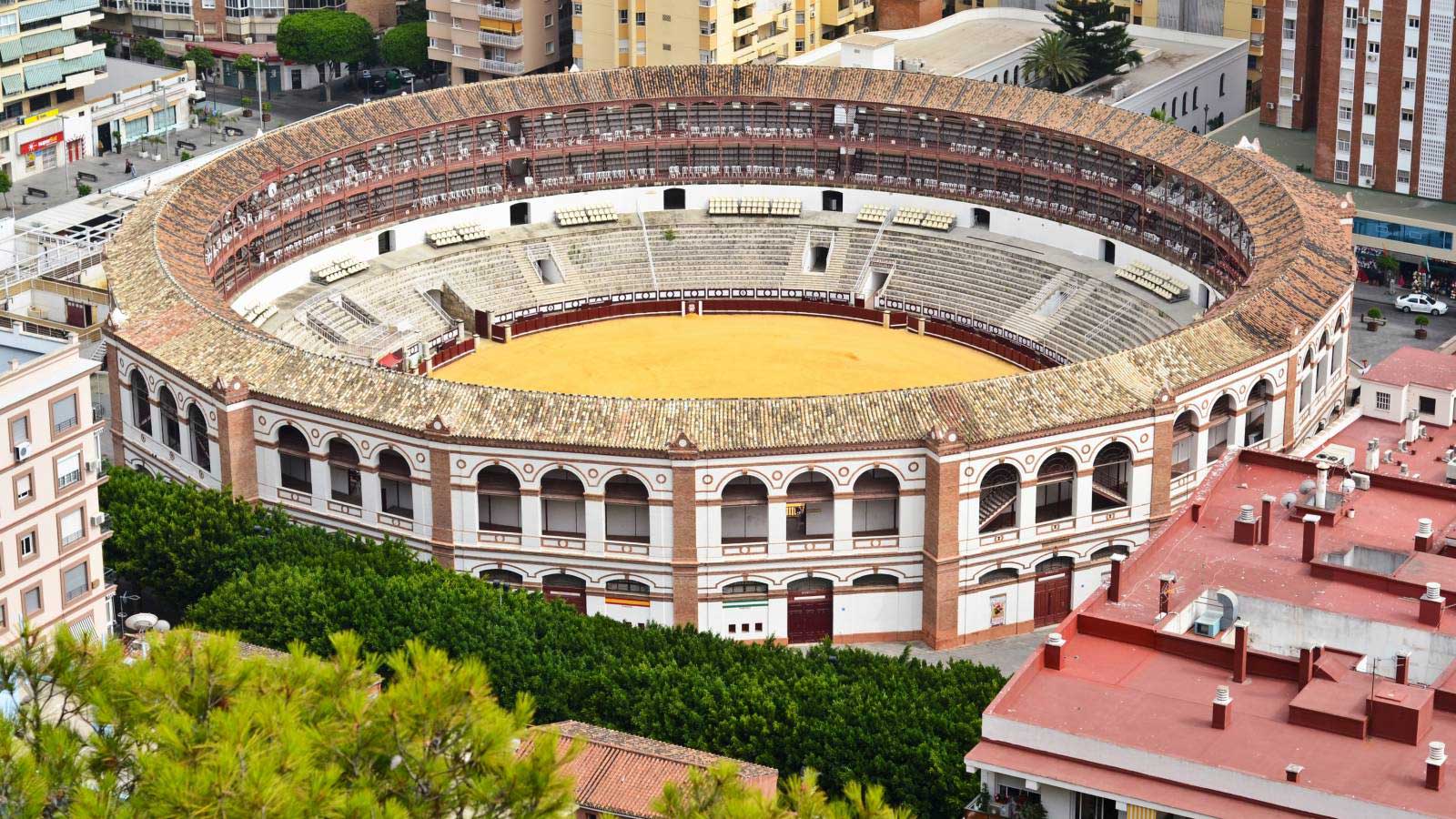
Ronda is considered one of the cradles of bullfighting, and for this reason, it is in September when those who want to enjoy bullfighting should visit it, and it is on this date when the famous Goyesca bullfight is celebrated, where the suits of lights are replaced by goyesco suits, typical of the 18th century.
In addition to visiting the bullring, do not forget to visit the museum, located in the same place, under the stands of the bullring, where we also find the Guarnicionería of the House of Orleans.
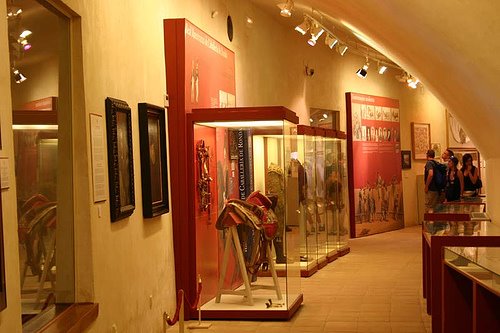
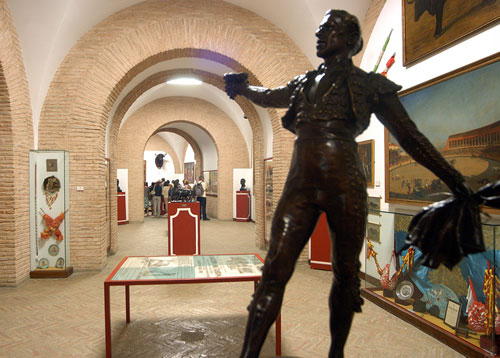
RONDA VIEWPOINT
Next to the Plaza de Toros, we find one of the viewpoints to visit in Ronda, from which we can appreciate another part of the Tajo de Ronda.
In addition, through it, we can reach a path to the edge of the cliff from where we can admire the beautiful views. Be careful! You will be walking on a walkway over the cliff.
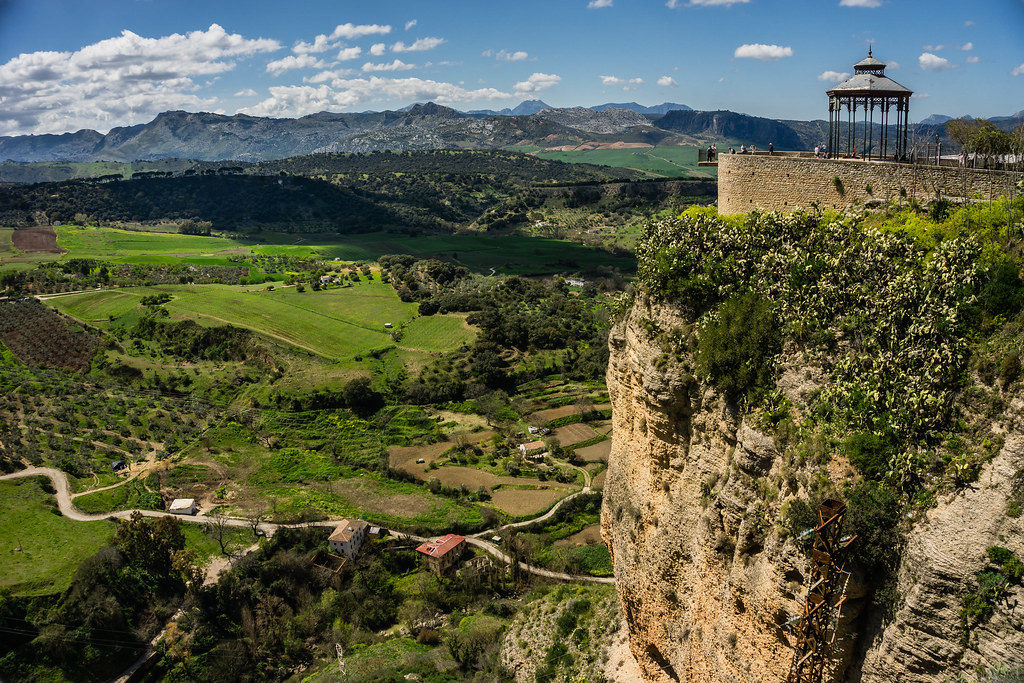
How about exploring the historical center of Ronda with a local guide? If the plan sounds good to you, sign up for this free tour!
MUSEUMS OF THE CITY OF RONDA:
MONDRAGÓN PALACE
The PALACIO DE MONDRAGÓN of Ronda is a mixture of Arab and Renaissance architecture, built in 1314.
Initially, it was the residence of King Abbel Malik and was used by the Catholic kings, after the Reconquest, as their main residence during their visits to Ronda.
Currently, this palace houses the RONDA MUNICIPAL MUSEUM, where we can see a permanent collection about the history of the town and displays of some Roman and Arab tombs.
Around the building, we can admire the PALACE GARDENS, from which wonderful views of the old town of the city can be appreciated.
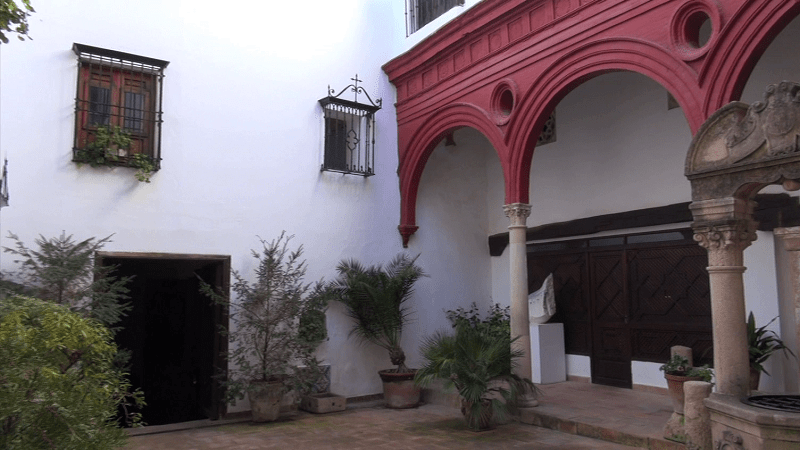
BANDIT MUSEUM, where you can learn about the history of bandits.
Bandits mark the modern history of Ronda, whose legend takes place at the beginning of the 19th century. This legend can be seen in the well-known television series “Curro Jiménez”. Banditry was very common in the narrow main passes of Andalusia, such as Despeñaperros or the Ronda gorge. These delinquents terrified merchants and were present until the 20th century, and their importance, for better or for worse, has even led to the creation of a museum.
The BANDIT MUSEUM shows the history of the region’s most famous outlaws through photos, documents, and anecdotes from their lives. And although these smugglers robbed the rich to give to the poor, they were true murderers.
It is located on Aminan Street, next to the Duquesa Square, considered one of the most beautiful squares in the city. Surrounded by several monuments, such as the Town Hall, and the well-known Church of Santa María.
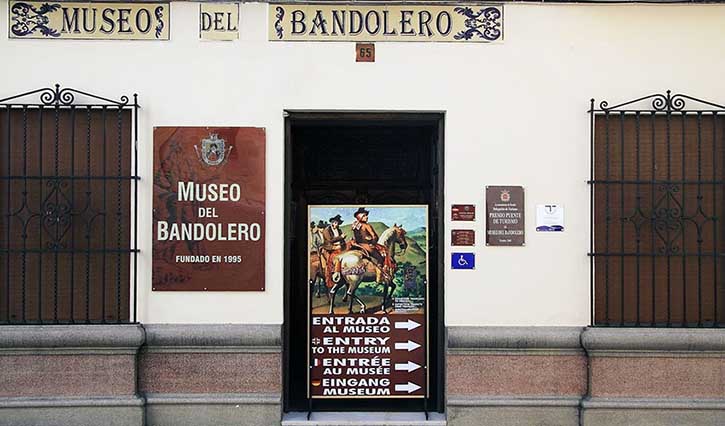
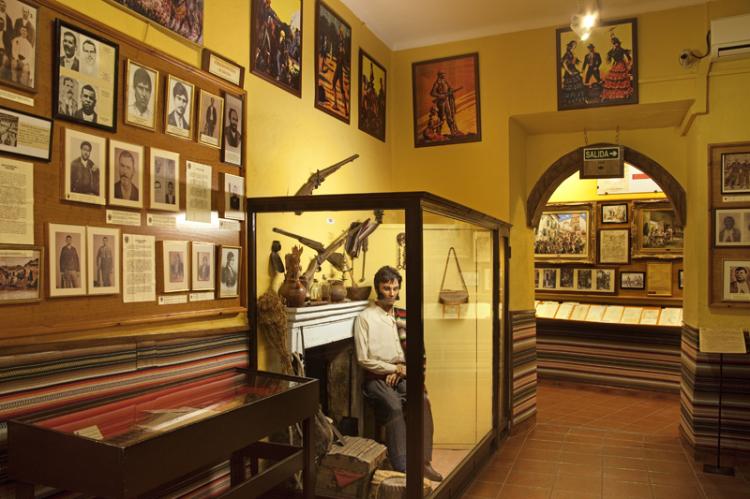
IT IS THE ONLY MUSEUM IN SPAIN OF ITS KIND, SO IT IS SOMETHING CURIOUS TO SEE IN RONDA.
LARA MUSEUM AND THE DON BOSCO HOUSE MUSEUM
Two interesting museums in the city. The DON BOSCO HOUSE, a museum house with works by local and foreign artists, with a collection of ceramics from the area and 19th century tapestries, surrounded by magnificent gardens with colorful Nasrid motifs, and the LARA MUSEUM with exhibitions of antiques.
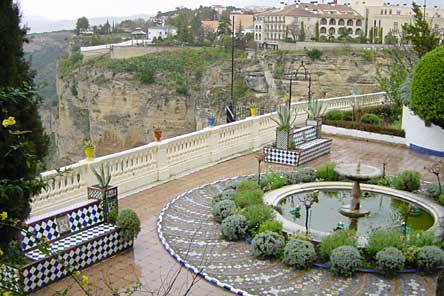
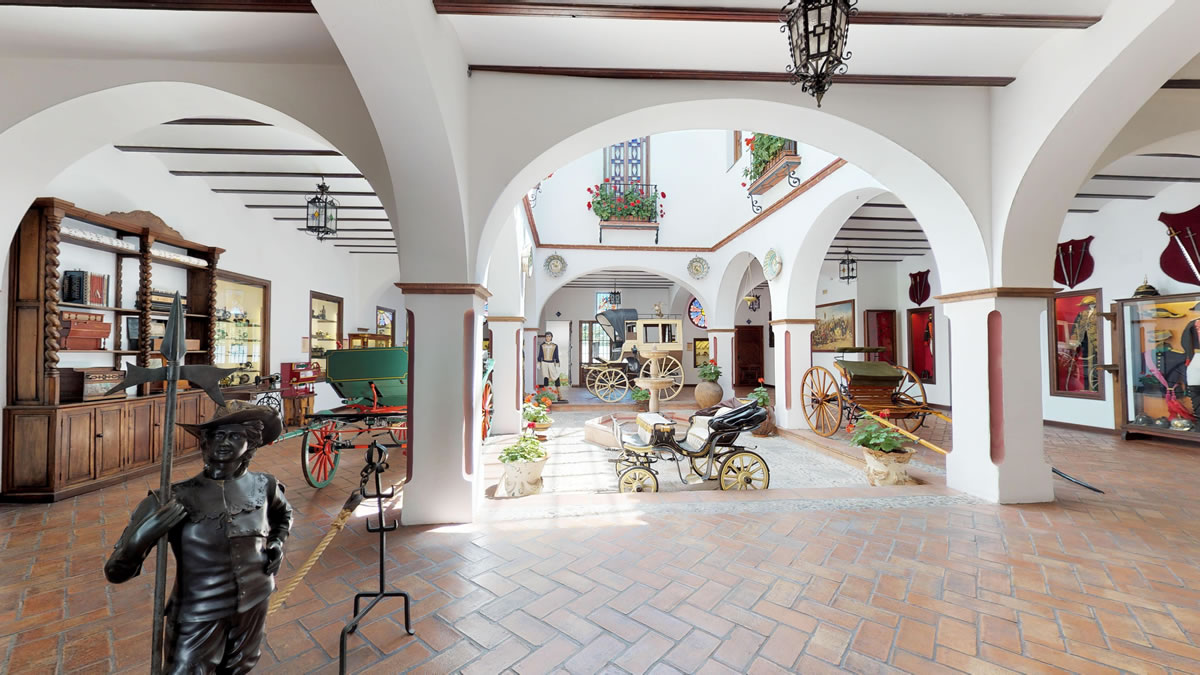
A very good option to get to know the most important points of the city is to take a Free Tour of Ronda, a guided tour where you set the price at the end and it shows you everything to see and do in Ronda.
ARABIC TRACES IN THE CITY OF RONDA:
OLD BRIDGE
In addition to the New Bridge, we have another iconic bridge in the city, and although it is not as touristy, it is worth a visit. This bridge, OLD BRIDGE, was built by the Arabs in the 15th century, although there is controversy over its construction, some say it dates back to the Muslim era.
Near the Old Bridge we find a set of terraces on different levels, the Cuenca Gardens, which offer a different perspective of the city and where we can take a break and recharge.
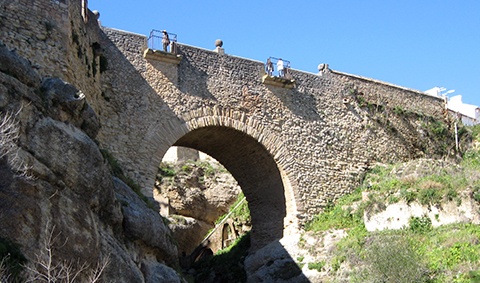
GATES OF RONDA AND ARAB WALLS
The ALMOCÁBAR GATE is the old city gate, located in a part of the Arab walls that was built in the 13th century and is the largest gate. It is surrounded by two semicircular towers and where we find the coat of arms of Carlos V which was added later.
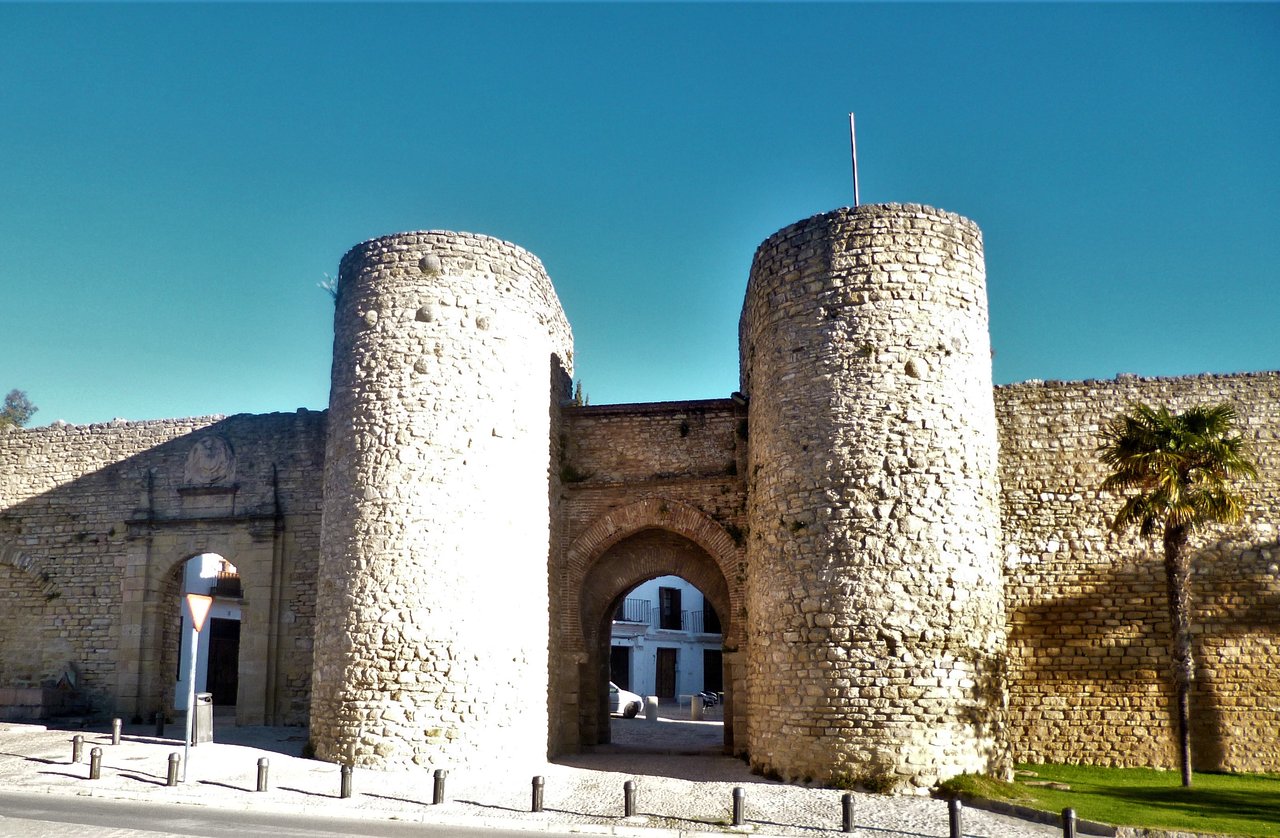
In the eastern part of the city, we find the CIJARA GATE.
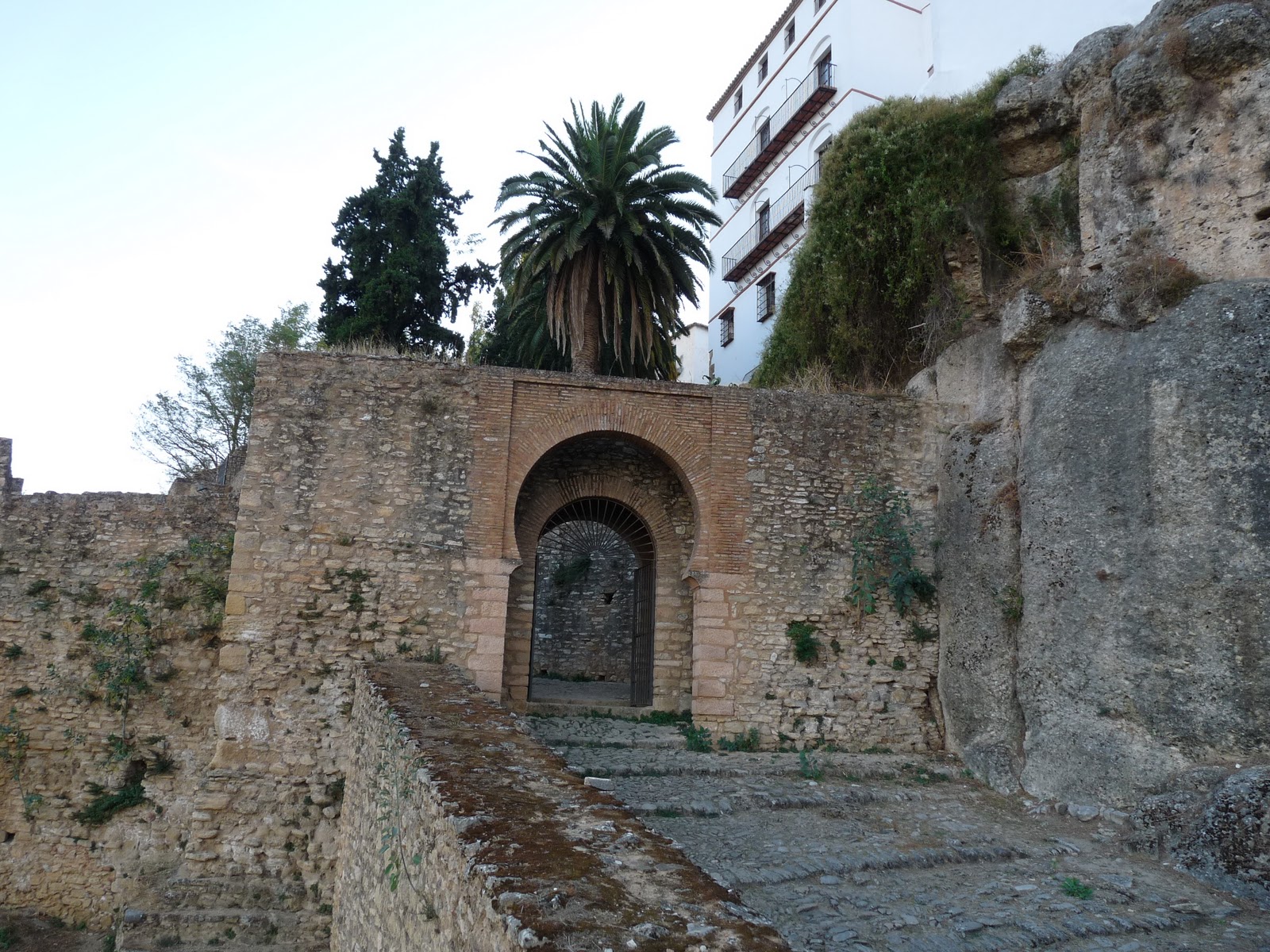
In the western area, we find the ALBACARA WALLS, built to protect the windmills, and where we can see two other gates, the MOLINOS GATE and the VIENTO GATE.
NEXT TO THE ANCIENT WALLS, WE CAN STROLL ALONG A COBBLED PATH PASSING FIRST THROUGH THE FELIPE V ARCH AND THEN THROUGH THE CIJARA GATE, AN ARAB-STYLE GATE, ONE OF THE ANCIENT ENTRANCES TO THE CITY.
ARAB BATHS
The ARAB BATHS of Ronda are the best-preserved in Spain. They are located in the San Miguel neighborhood.
They were built in the late 13th century and are arranged like Roman baths, with a cold, warm, and hot area. Today, the original hydraulic system remains almost intact. We can still see the cauldron used to heat the water and the star-shaped ventilation grilles on the ceiling, inspired by the Alhambra in Granada.
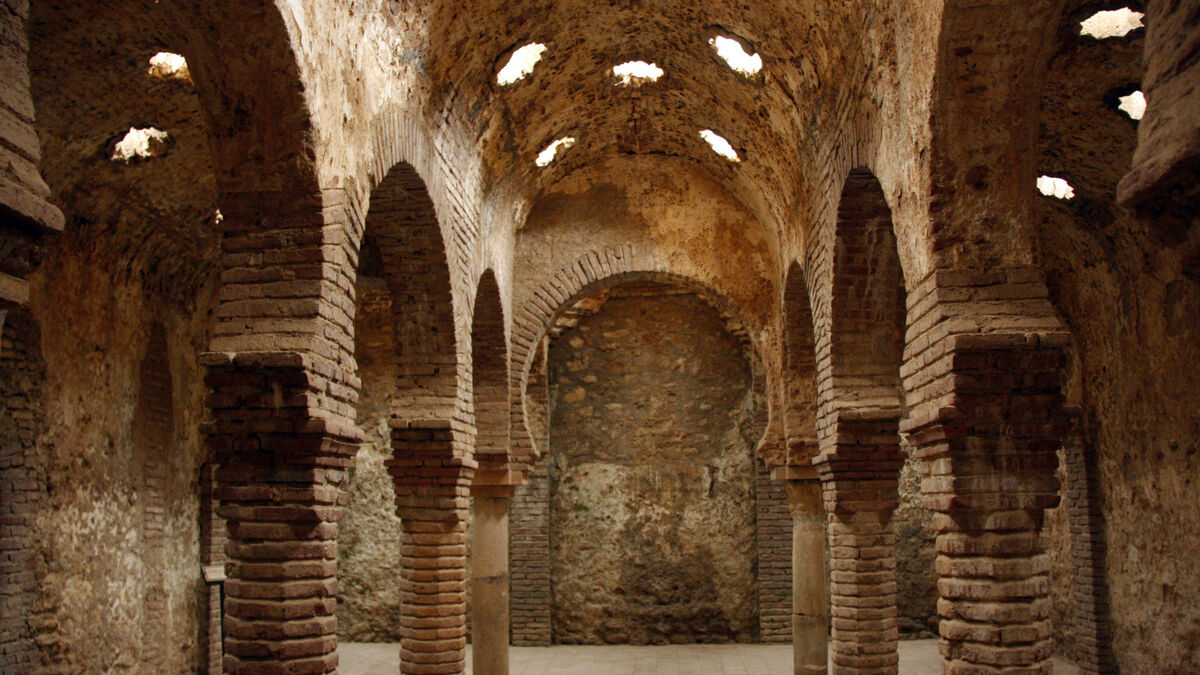
THE MOSQUE, NOWADAYS SANTA MARÍA LA MAYOR
The most important church in Ronda, whose construction lasted almost 200 years, is Renaissance and Gothic in style. We advise you to stop for a moment to admire its nave and its Gothic-style columns, its two-story Renaissance choir, and its Baroque elements.
From the Muslim era, the mihrab arch and a decorated section of the interior wall of the church are preserved, and on the outside, its octagonal bell tower with a series of pointed pinnacles. Without a doubt, one of the best things to see and do in Ronda.
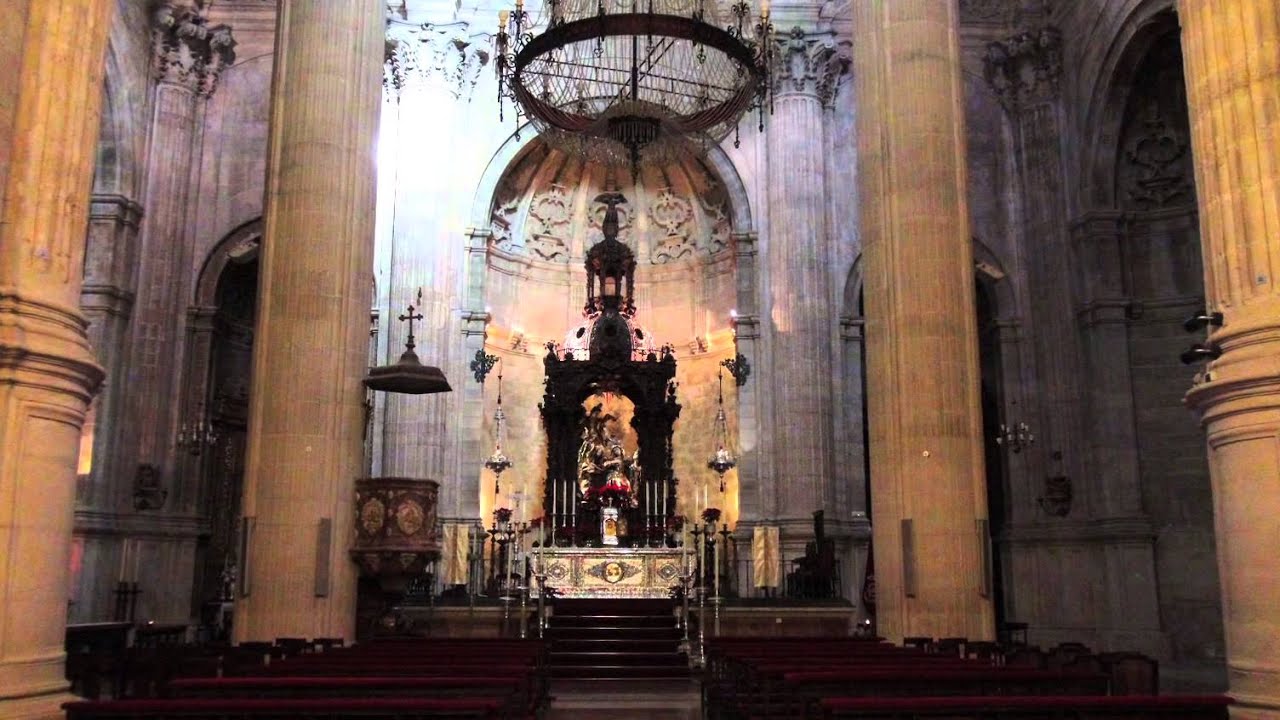
HOUSE OF THE MOORISH KING
An Arab palace built in the 14th century during the Nazari Kingdom, with sumptuous terraced gardens with canals and fountains that can be visited.
In a room in the lower part of this palace, the water mine was installed, a water pumping system that runs along the ravine to the Guadalevín River. This system supplied water to the city.
The Casa del Rey Moro consists of three areas: the Water Mine, the Neo-Mudéjar Style House, and the Garden. Nowadays, the Mine and the Garden can be visited.
To reach the bottom of the gorge, from the water mine, we find a staircase cut from the rock of about 300 steps, which descends 60 meters until reaching a platform that allows for stunning views.
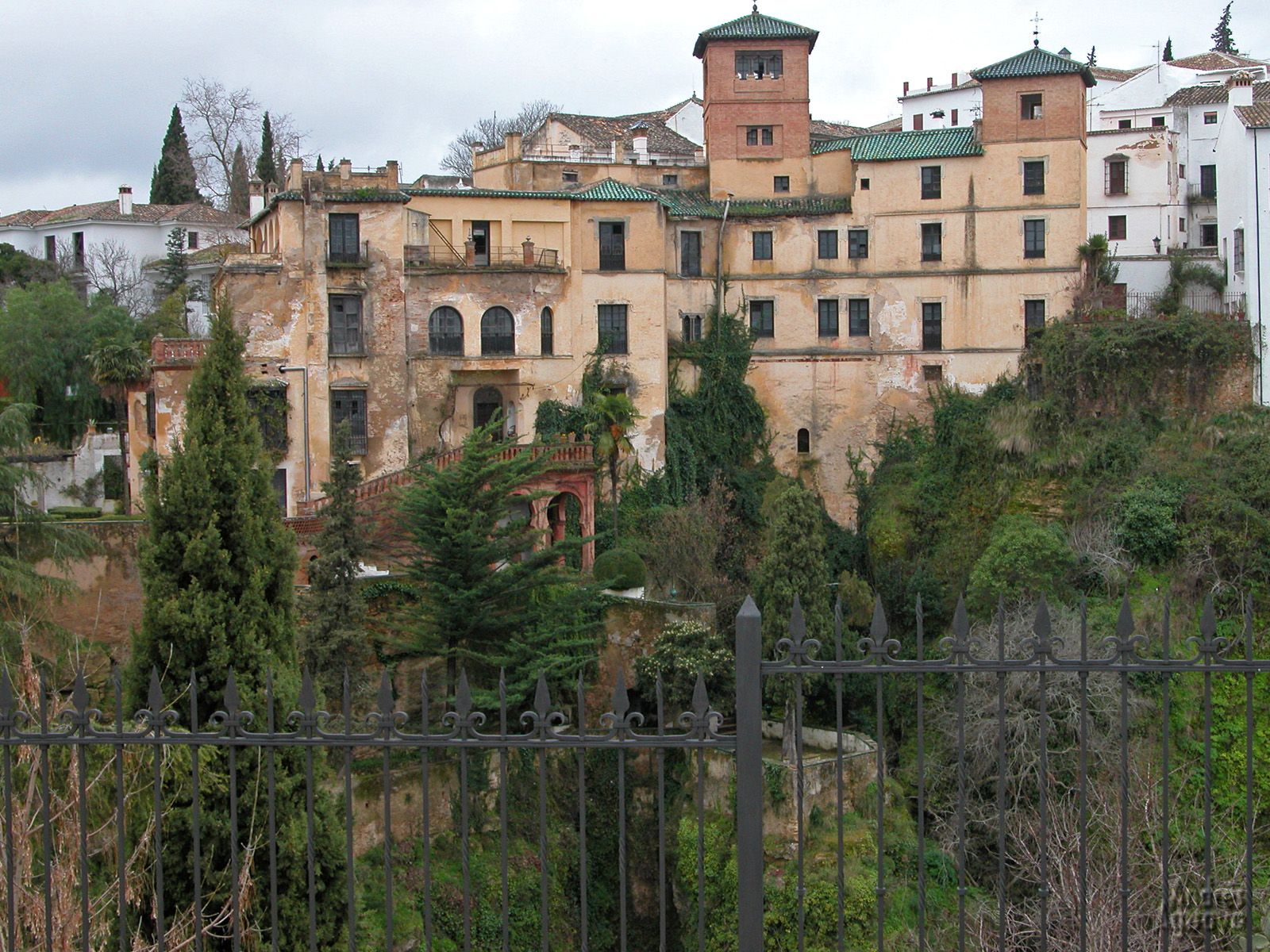
SAN SEBASTIÁN MINARET
It is what used to be the tower of an ancient mosque, located in Plaza Abul Beka, with a beautiful entrance arch made of stone and brick that stands out among the white houses of the historic center of Ronda.
ENJOY NATURE IN THE NATURAL PARKS OF THE SERRANÍA DE RONDA:
Ronda is surrounded by the well-known Serranía de Ronda, where we can enjoy nature in some of its natural parks:
– Natural Park of the Alcornocales, a jungle in Europe!
– The Natural Park of the Sierra de Grazalema, the place where it rains the most in Spain!
– Natural Park of the Sierra de las Nieves, full of pinsapos! And with a surprise, in it, one of the deepest caves in the world, with more than 1200 meters of vertical drop.
WHERE TO EAT IN RONDA?
To enjoy gastronomy in Ronda, we can stop at one of its squares or terraces, such as the Plaza del Socorro: a square surrounded by bars and restaurants with terraces, where you can also enjoy the view of the Church of Our Lady of Socorro.
We show you some places to have tapas and eat in Ronda:
-
For tapas in Ronda, it’s cheap and the food is good:
1. El Lechuguita
One of the most famous bars in Ronda, with numerous montaditos and the special lechuguita tapa. On Calle Virgen de los Remedios.
2. Entrevinos
A small place where you can taste wines from Ronda and delicious tapas. On Calle Pozo.
3. De locos Tapas
Innovative tapas such as langostino lollipops, cheese toast, Guggenheim ice cream, among many others. On Plazuela Arquitecto Francisco Pons Sorolla.
4. Tape Art
Tapas bar where you can taste one of the most famous tapas in Ronda, the nests, simple and with grace. On Calle Comandante Salvador Carrasco.
-
If you prefer to eat at a restaurant in Ronda, you should keep in mind that some of them are somewhat expensive, but worth it:
1. Los Cazadores
The restaurant in Ronda where you eat the best fresh fried fish of the day. On Calle Rosal.
2. Casa María
A restaurant where you can have menus of the day, which usually include three dishes, starter, main course, and dessert. On Plaza Ruedo Alameda.
3. Tropicana
A restaurant with more than 30 years that started as a hamburger joint and has become a restaurant with quality products, a wine list from Ronda, and delicious dishes. On Avenida de Málaga.
4. Siempre Igual
A tavern with traditional food where they also sell wines from the area, where you can eat à la carte or menus of the day. On Calle San José.
5. Pizzería Michenangelo
An Italian restaurant in the heart of Ronda. Artisan pasta and pizza dough. On Calle Lorenzo Borrego.
BEFORE YOU LEAVE RONDA, WE SUGGEST YOU TAKE A PHOTO IN FRONT OF THE ROMANTIC TRAVELERS PLAQUE, A MURAL OF TILES THAT REPRESENTS THE CITY AND TWO LOVERS ON ITS SIDES.
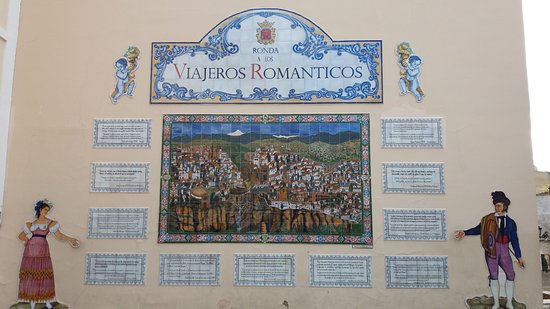
Where is Ronda? How to get to Ronda?
Ronda is located in the province of Málaga, in the autonomous community of Andalusia, southern Spain. It is approximately 100 kilometers west of the city of Málaga.
To get to Ronda click here.
Can you think of more things to see and do in Ronda? Leave us your comment


